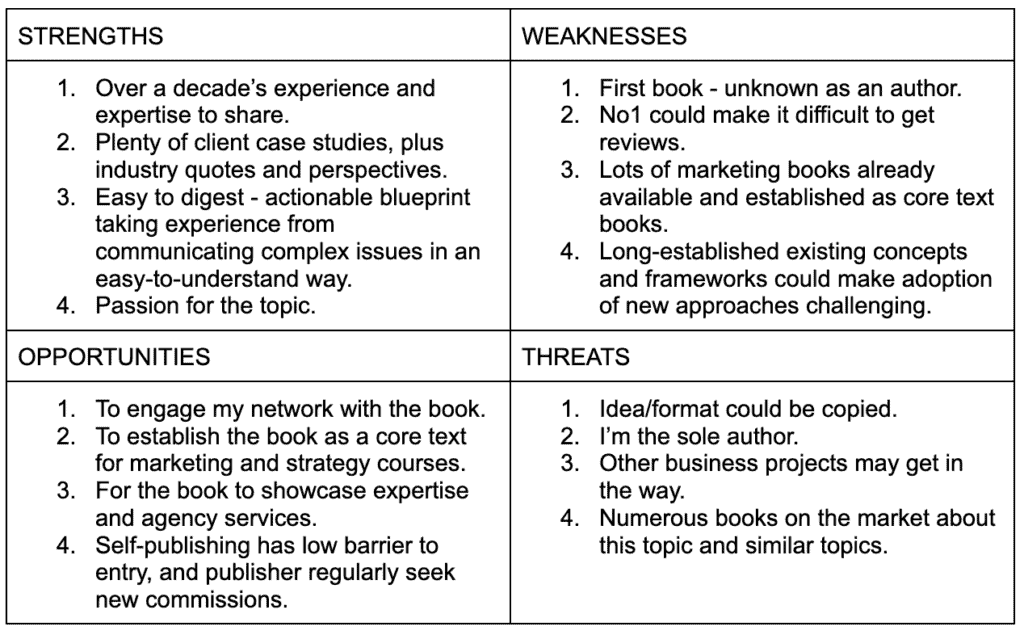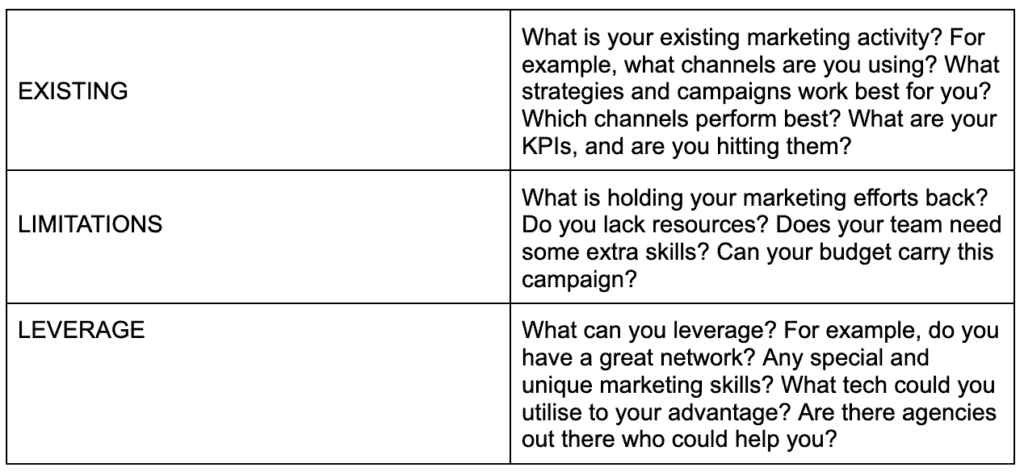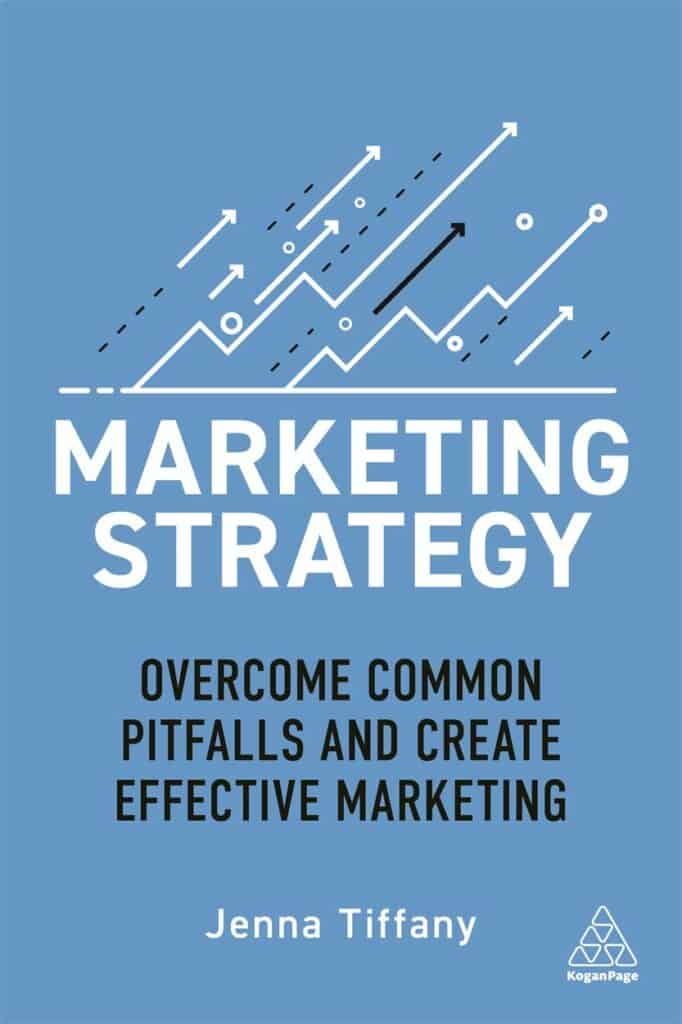Part 1 – SWOT & SWOTELL
If you’ve been following my blog or my book, you’ll know that I have a great acronym to help with strategy-building: STRATEGY.
S – Scenario
T – Targets
R – Reach
A – Awareness
T – Tactics
E – Execution
G – Generate
Y – Yield
The first step, S, involves looking at your current Scenario. I’ve covered the basics of this before, here, but today I’d like to take you a little deeper.
A big part of the Scenario stage is situational analysis. A good situational analysis is the springboard that will launch your entire strategy to success.
But what is a situational analysis? And how can you perform one perfectly?
Let’s take a look.
What is situational analysis?
A situational analysis starts with a question: “Where is the business now?”
This seems like a really simple question, doesn’t it? But there’s actually a lot to consider if you’re going to get a useful answer.
In my bestselling book, ‘Marketing Strategy’, I describe situational analysis as “analysing the context of your organization by assessing the internal (micro) and external (macro) factors which could be affecting it”.
Micro factors have a direct impact on your marketing operations. Sometimes, you can control these influences (for example, you can assign resources). Macro factors are less controllable (for example, it’s unlikely that you can alter the economy). You have to manoeuvre your way through the pre-existing macro environment.
Micro factors can be assessed using the SWOT and SWOTELL models. For the macro environment, PESTLE is best.
All three of these models deserve some time dedicated to them, so I’m going to split this guide to Situational Analysis into two parts. In this first part, I’ll introduce you to SWOT and SWOTELL, and explain how they can help you analyse your micro factors.
What are ‘micro factors’?
Calling them ‘micro factors’ is a bit unfair. It implies that they’re somehow less important than ‘macro factors’, and that’s not the case at all.
In Marketing Strategy, I describe micro factors as “factors which affect an organization internally, and the resources which help it to respond to these factors”. Examples of micro factors include:
- Team skills
- Budget
- The structure of your organization
- Brand reputation
- Supplier relationships
Analysing your micro factors will help you to understand what you’re capable of, how you can use your skills & resources to your best advantage, and what needs to change for your campaign to run effectively.
If you launch a campaign without first understanding your micro factors, you’ll quickly find yourself out of your depth. You might over-reach, or under-reach. You might make goals you can’t realistically achieve, or promise resources you don’t actually have.
However, a good analysis of your micro factors will give you a good, solid foundation on which to build your campaign.
So, where should you start?
With SWOT.
SWOT
SWOT is the classic framework for getting situational awareness. It stands for Strengths, Weaknesses, Opportunities, Threats.
SWOT analysis is a simple but effective way to understand the micro factors which could affect your campaign. For example, here is the SWOT analysis I conducted before launching my book:

You’ll notice that there is some overlap in this table. That’s not uncommon for a SWOT analysis. In fact, you may sometimes find that something you identified as a threat or weakness can also be an opportunity.
For example, the table above describes the fact that other marketing books are already established as core texts as a weakness – but also presents the option for the book to become a core text as an opportunity. The fact that there are several core marketing texts indicates that there’s an interest in and a need for such books.
SWOTELL
SWOT is a fantastic framework – but it could be better. So the next time you’re using a SWOT consider added ELL.
SWOTELL stands for Strengths, Weaknesses, Opportunities, Threats, Existing, Limitations, Leverage.
Those three extra letters are specifically marketing-focused. By using them, you’ll really dig down into what you’ll be working with as you start your campaign.
Let’s take a look at ELL:

So, while SWOT tells you about the general micro factors affecting your business, ELL builds on that to give you a deeper, more nuanced understanding of how those (and other, more specific) factors affect your marketing.
Get deeper into situational analysis with Marketing Strategy
Hopefully this guide will help you to successfully analyse your micro factors. However, I haven’t covered everything here! There’s way more to learn!
I’ll get into the macro factors in the next in this series. But if you can’t wait until then – or if you want to know even more about micro factors with even more examples and interviews from marketing and business thought leaders – buy my book: Marketing Strategy.
It will tell you everything you could possibly need to know about situational analysis and loads more. Plus, there are great case studies, interviews, and exercises to help you get a practical start on your next winning strategy.


